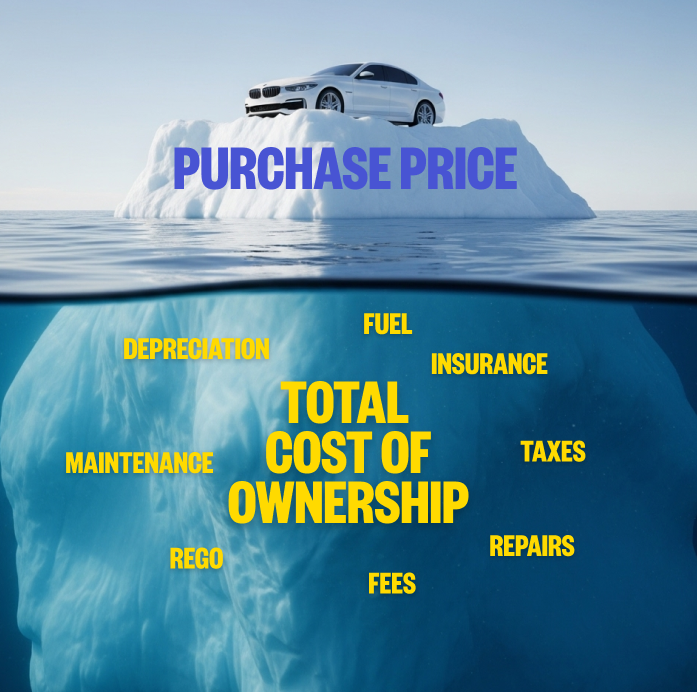Feature article
TCO Explained: What's the Real Cost of Your Car?
A car's Total Cost of Ownership (TCO) is more than its price. It includes depreciation, running costs, and taxes.
18 September 2025

When you're on the hunt for a new car, it's easy to focus only on the price. But the initial purchase is just one part of the car-owning story. To understand the true cost of any vehicle, you need to look at its Total Cost of Ownership, or TCO. Thinking about ownership holistically helps you budget better and make a smarter choice.
So, what exactly is included in the Total Cost of Ownership? Let's break it down.
1. Depreciation: The Biggest Cost You Don't See
Of all the expenses tied to owning a car, depreciation is often the largest, yet it's the one we think about the least. It’s the cost you only really notice when it's time to sell.
Depreciation is the gap between what you pay for a car and what you sell it for later. For most new vehicles, this loss in value is steepest in the first few years of ownership.
Let’s look at an example. Imagine you buy a shiny new car for $40,000.
- After three years, you sell it for $24,000.
- During those three years, you might have spent $7,000 on fuel, $3,000 on insurance, and $1,500 on maintenance.
In this case, the invisible cost of depreciation ($16,000) was significantly more than all the fuel, insurance, and maintenance costs combined. This is why a cheaper car that depreciates heavily can en
2. Running Costs
These are the more obvious, day-to-day expenses of keeping your car on the road.
Fuel: Whether it’s petrol, diesel, or electricity, this is a significant ongoing cost. Fuel efficiency varies a lot between models, so it's a key factor to consider.
Insurance: Comprehensive, third-party, or third-party, fire and theft insurance is a must. The cost will depend on the car's value, plus the age and driving history of the nominated drivers.
Registration and WOF: In Aotearoa, you’ll need to pay for your vehicle registration (rego) and get a Warrant of Fitness (WOF) every six to twelve months, depending on the age of your car.
Maintenance and Repairs: This includes everything from routine servicing and new tyres to unexpected mechanical repairs. Some cars are more expensive to maintain than others due to the cost of parts and labour.
Bonus tip: Start a ‘car account’ and put a small amount of money aside each payday. If an unexpected cost comes up, you'll at least have a bit of a cushion.
3. Financing and Taxes
If you take out a loan to buy your car, the interest you pay is part of its TCO. Additionally, any taxes or levies, like Road User Charges (RUC) for diesel and electric vehicles, add to the overall cost.
Government policies can influence purchase costs, so it's always worth checking for any current rebates or fees that might apply at the time of purchase.
How TCO Works in the Real World: The Cars
To see this principle in action, let's look at a few examples from right here on Trade Me.
Pricey Cars That Hold Their Value
Some cars might seem expensive upfront, but their strong resale value means they can actually be cheaper to own.
The Go-Anywhere Family Hauler: Toyota Land Cruiser Prado
You'll see these everywhere, and for good reason. With a legendary reputation for reliability, a Prado you buy today will likely sell for a very strong price in three-to-five years. Demand for capable, trusted 4WDs is always high in New Zealand, which keeps resale values strong.
The Cult Classic: Suzuki Jimny
The Jimny is a perfect example of how personality can defy normal depreciation rules. Its retro design, genuine off-road credentials, and cult following mean that supply often struggles to keep up with demand. That 'cool factor' translates directly into a resale price that barely seems to drop.
On the Other Hand: A Car with Fast Depreciation
A Large European Luxury Sedan (e.g., BMW 7 Series, Audi A8) You can find a 5-to-7-year-old model for what looks like a bargain. The catch? It has already lost a massive chunk of its original value, and that trend is likely to continue. Add in the higher running costs for insurance and maintenance, and the total cost of ownership can become very high, very quickly.
The Sweet Spot: An Affordable Car That Holds Its Value
You don't need to buy an expensive 4WD to get good resale value.
The Suzuki Swift One of New Zealand's most popular small cars is also one of the safest bets with your money. The Swift has a stellar reputation for being fuel-efficient, cheap to run, and very reliable. Because it's so popular, there is always a huge pool of buyers looking for them, and this constant demand helps keep resale values strong.
Why Does TCO Matter?
By looking at the whole picture, you can avoid surprises and find a car that truly fits your budget. A little bit of research into how a car depreciates can help you make a much smarter financial decision.
So next time you're browsing for a new ride, remember to think beyond the price tag and consider the Total Cost of Ownership.
Author
Other articles you might like




